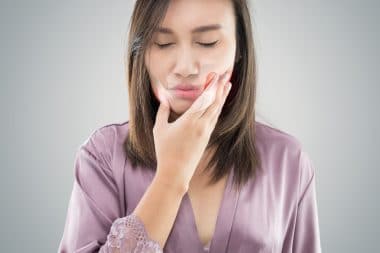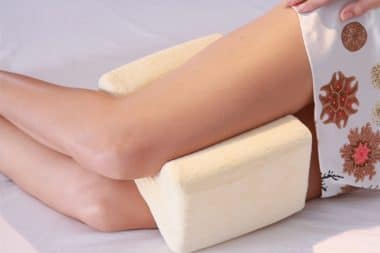Rheumatoid arthritis affects 2.1 million people in the U.S. alone and many more than that worldwide. Rheumatoid arthritis is a disease which causes chronic inflammation, tissue degeneration and loss of cartilage and bone; which leads to loss of joint mobility and decreased joint function. It is painful and debilitating affecting daily life.
Could arthritis be linked to fibrin deposits?
The cause for rheumatoid arthritis is unknown. But research is looking at Fibrin an insoluble protein that your body produces in response to bleeding and is a component of blood clots. When there is tissue damage that results in bleeding fibrin molecules combine to form blood clots. Fibrin deposits are prominent in arthritic joints.
This excessive fibrin could be a cause or contributing factor of arthritis and joint inflammation.
Osteoarthritis affects nearly 30 million Americans and is the most common type of arthritis. Osteoarthritis is a degenerative joint disease that develops when cartilage in the joints breaks down over time. It can affect any joint but is commonly found in the knees, hands, hips or spine.
Most people over 60 have arthritis to some degree.
Could arthritis also be linked to enzyme deficiency?
Young people heal fast. This is partially attributed to the amount of enzymes a young person has. Once you hit 25 your enzymes start to diminish. Many enzymes fight inflammation. It is important to eat a wide variety of inflammation fighting foods in order to increase your enzymes. You want to improve your chances for fighting inflammation and dissolving scar tissue (both are often present in arthritic joints) which becomes more difficult as we age.
Proteolytic enzymes diminish around 27 years old. Pineapple contains a number of proteolytic enzymes. Bromelain was first reported to be of value in 1964 as an analgesic and anti-inflammatory for use in both rheumatoid arthritis and osteoarthritic patients.
Risk Factors:
- Age – More likely the older you get
- Women over Men for osteoarthritis
- Obesity
- Old Injury
- Overworked Joints
- Poor Nutrition
- Metabolic Disorders
- Genetics – Family history
Symptoms:
- Joint swelling
- Fluid accumulating in joints
- Achy joints
- Soreness with movement
- Bony joints
- Pain after overuse
- Pain after inactivity
Treatment:
Lifestyle Changes:
- Avoid sugar, processed food and refined carbohydrates. (This includes white bread, white rice, and potato chips)
- Avoid blackened and barbecued foods.
- A whole food plant based diet is ideal.
- Increase consumption of oily fish; such as sardines, tuna and mackerel.
- Do use extra virgin olive oil and safflower oil.
- Eat avocados.
- Increase consumption of: spinach, kale, chard, collard greens and broccoli.
- Drink green tea.
- Consumption of nuts is good.
- Pineapple – Pineapple contains anti-inflammatory enzymes such as bromelain. Bromelain also breaks down fibrin reducing swelling. Pineapple also has enzymes that help break down proteins. A German 2005 study showed that bromelain activated immune cells that fight infection. You can also take this as a supplement. Talk to your doctor before taking as a supplement. This should not be taken if you are on blood thinners.
- Ginger – Ginger contains chemical qualities similar to NSAIDs for pain relief and helps fight inflammation. You can add ginger fresh ginger to a variety of foods or steep into tea.
- Turmeric – Turmeric contains curcumin. Curcumin shuts down certain protein in the body that cause inflammation.
- Maintain a healthy weight.
- Enzyme supplements do not need a prescription and can be found at many locations. It is always a good idea to talk to your doctor before taking any supplement. You want to make sure that what you are taking will not affect any of your current medications.
Manage Pain:
- Acetaminophen
- Nonsteroidal Anti-Inflammatory Drugs (NSAIDs) – Ibuprofen etc.
- Prescription Pain Medicine (often times Narcotics and Opiate Analgesics)
- Joint Injections (Corticosteroids or Hyaluronic Acid Medications)
Surgery Options:
- Arthroscopy – This type of surgery can repair, reshape or remove pieces of cartilage.
- Joint Replacement – This is a more complicated surgery but can help you resume an active lifestyle.
Tips to Protect Joints
Maintain a healthy weight.
Engage in low impact exercise. – Low impact exercise can strengthen the muscles around your joints, improve flexibility and east joint stiffness. Some examples are walking, elliptical, bicycling or swimming. Exercise will improve your cardiovascular health, improve your mood, and increase your stamina and energy. Yoga can greatly help you improve your flexibility.
Apply heat to relax joints and muscles when stiff.
Ice joints after exercise, if necessary, to ease swelling.
More Research Necessary
Arthritis is the most common cause of long-term disability. Figuring this out could not only save so many people from daily pain but the world would benefit from lost production. We know more about arthritis than we used to and we have the ability to treat arthritis better than ever. But we don’t have a cause or a solution at this time. More research is necessary.
Protect Joints from Arthritis #HealthStatus
Sources:
https://healthyy.net/arthritis/pineapple-for-osteoarthritis
https://www.ncbi.nlm.nih.gov/pmc/articles/PMC538506/
https://www.arthritis.org/living-with-arthritis/treatments/natural/supplements-herbs/guide/bromelain.php
https://www.healthmonitor.com/rheumatoid-arthritis/food-fitness/written-article/3-foods-help-fight-rheumatoid-arthritis
https://www.britannica.com/science/fibrin
https://www.mayoclinic.org/diseases-conditions/arthritis/in-depth/arthritis/art-20047971
https://www.medicalnewstoday.com/articles/322603.php
https://pdfs.semanticscholar.org/5dba/6200a89f0b2a573abdab71ba6b04c6bcf28b.pdf
https://wisenutritioncoaching.com.au/2018/09/rheumatoid-arthritis-and-fibrin/
https://www.jimmunol.org/content/184/1/379
https://www.takingcharge.csh.umn.edu/conditions/arthritis
https://www.ncbi.nlm.nih.gov/pubmed/17932565
https://www.ncbi.nlm.nih.gov/pmc/articles/PMC5536100/









Reply